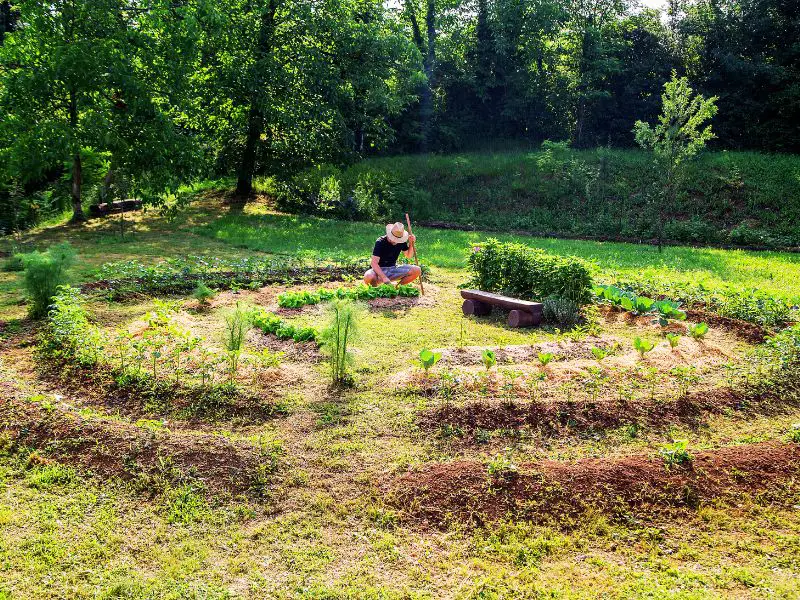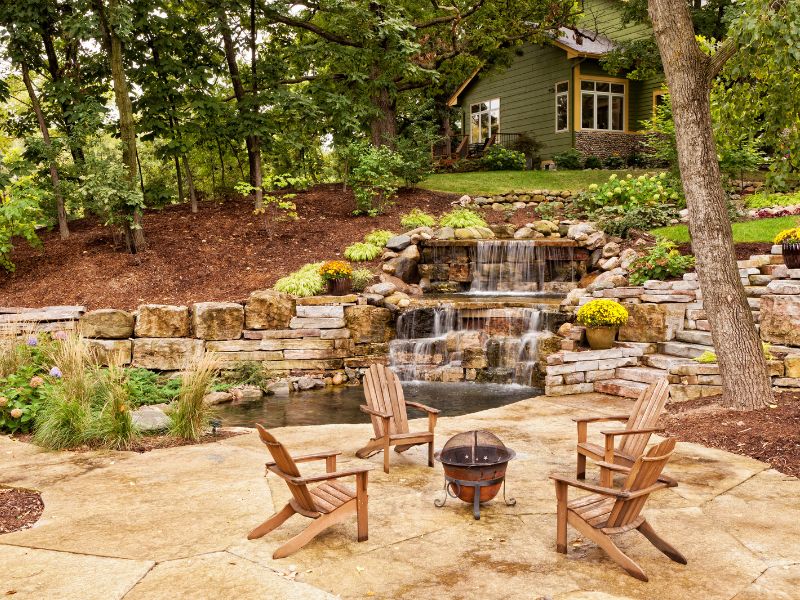Everyone can benefit from learning about and implementing permaculture in their lives and communities. Permaculture practitioners are in high demand in the modern world because they directly address global problems such as social inequality, soil deficiency, climate change, and water and food shortages.
What Does a Permaculture Designer Do?
Permaculture Designers are the earth’s crusading Landscape Architects in the struggle to make the planet a little greener. Permaculture designers develop self-sufficient, environmentally friendly places.
A permaculture’s job is to use what they have best. They start projects by looking at the land, including the plants and animals. They focus on natural systems in landscape design: working with nature rather than against it. Their job is to maximize the productive capacity of the land to create a lasting effect while enhancing the well-being of the environment and its communities.
Ways a Designer Can Help You
1. Permacultures Are Trained to Landscapes
Permaculture designers get training to read the terrain and evaluate a property to determine the extent of its creative and productive possibilities. They become aware of windows of opportunity on the soil where they may capture and store resources, such as rainfall flows or fertility.

2. Permaculture Designers Can Turn Your Dream Into a Reality
Permaculture designers can assist you in transforming your concept into something enjoyable, gratifying, and possible. Nothing is worse than having a vision but lacking the resources to fulfill it to its fullest extent.
Trained permaculture can incorporate permaculture techniques like swales, food forests, herb spirals, etc. However, finding the most beneficial and practical arrangement of these components on the land can be challenging.

What’s more, every family is motivated by different things. Instead of a sprawling garden, you might create a bird sanctuary, a backyard forest retreat, or a wildlife corridor. You may get assistance from a permaculture designer with your ideas.

3. Permaculture Designers Are Trained to Work on Challenging Sites
A permaculture designer can assist in enhancing the stability and ecology of challenging environments, such as steep slopes, drainage and erosion concerns, inadequate fertility, and damaged wildlife corridors.
A qualified designer may help you combine a profitable landscape with ecological restoration by using nature as a guide.

Related: Permaculture Plants, Desert Permaculture, Urban Garden
What to Look For in a Good Permaculture Designer?
Check the professional’s website for this information, and don’t hesitate to ask for it. They’ll appreciate that you’re researching to find a designer who shares your objectives.
The following vital principles can assist you in choosing the best expert for you.
1. Education
A certified permaculture designer must have undergone six months of intensive training. The training includes understanding the technology, ethics, and design of permaculture systems.
2. Certification
Check whether the designer is licensed and certified to practice permaculture. This means that the designer has undergone the prescribed number of hours to acquire the skill and knowledge and passed the required exams.
3. Experience
A good designer should prove their work by showing you a portfolio of previous jobs. For better peace of mind, insist on seeing at least one site the designer has worked on previously. Try to clearly understand how the project was executed and what the designer learned from it.
4. Written Contract
A written contract is a written agreement between two parties. It outlines the terms of the agreement and serves as a legal document. It’s an important legal document because both parties must sign it to become a legally binding contract.
The landlord and tenant must both sign the contract to make it legally binding. A written contract usually includes the following:
- The date the agreement was made, and who the people are.
- The type of agreement.
- The items or services being purchased or sold.
Additionally, the contract may list the obligations of the buyer and seller, including payment terms and penalties for breach of contract. Finally, the contract usually has a signature line where both parties can sign and date it.
5. Compatibility
This is true for any service provider you hire: You should like the person, not just the job. Did you feel at ease when you talked to them?
You’ll spend a lot of time together in meetings, so make sure they are professional, knows what they’re talking about, and can be trusted.
6. Attitude
The designer’s attitude says a great deal about their ability to work with people who share different ideas. The right attitude can distinguish between a designer who merely supervises the work and one who inspires a vision.
7. Competence
A designer should show competence in installing and designing permaculture systems. They should also be good at explaining permaculture concepts and practices to their clients.
The pricing of professional services is a subject that tends to be very controversial but shouldn’t be.
Working out how much a job should cost is just as simple as working out what something is worth.
8. Insurance
Insurance protects individuals and businesses against financial losses from accidents and unforeseen events.
A good designer should have adequate insurance to protect you, the client, against any claims arising from damages during work. Additionally, a good designer should have liability insurance to cover their legal expenses if a client sues them because of a loss resulting from the work.
9. References
References are essential because you can learn valuable information from another client’s experience.
References can shed more light on a designer’s performance on the job. References are prior clients of the designer willing to vouch for them. References are good indicators of a designer’s competence and reliability, so you should obtain references before making the final decision.
Bottomline
A good designer can implement fantastic ideas while keeping your budget in mind. However, a lousy designer could do more harm than good. A garden that isn’t designed well can be difficult for even the most experienced gardeners to manage without the proper training and knowledge.
An enthusiast will be enthusiastic about your project and want to see it succeed.
If you can afford it, hire a permaculture designer with a a justified track record of working with your region’s soil conditions and plants.
A good designer can help you develop a game plan to help you come up with the most productive and pleasing landscape possible.

